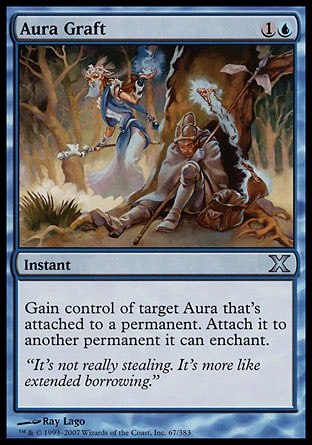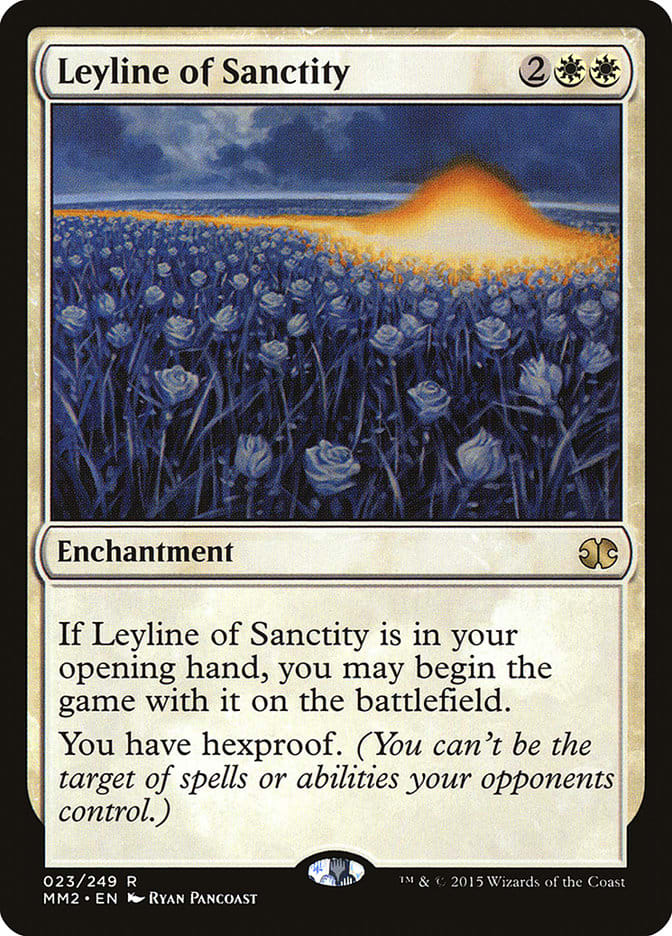

If this occurs somehow, the Aura becomes unattached, then is put into its owner’s graveyard. An Aura that’s also a creature can’t enchant anything. If this occurs somehow, the Aura is put into its owner’s graveyard. 303.4c If an Aura is enchanting an illegal object or player as defined by its enchant ability and other applicable effects, the object it was attached to no longer exists, or the player it was attached to has left the game, the Aura is put into its owner’s graveyard.The Aura is attached to, or “enchants,” that object or player. 303.4b The object or player an Aura is attached to is called enchanted.303.4a An Aura spell requires a target, which is defined by its enchant ability.Other effects can limit what a permanent can be enchanted by. What an Aura can be attached to is defined by its enchant keyword ability (see rule 702.5, “Enchant”). Some enchantments have the subtype “Aura.” An Aura enters the battlefield attached to an object or player. See rule 205.3h for the complete list of enchantment types. Enchantment subtypes are also called enchantment types. Enchantment subtypes are always a single word and are listed after a long dash: “Enchantment - Shrine.” Each word after the dash is a separate subtype. When an enchantment spell resolves, its controller puts it onto the battlefield under their control. Casting an enchantment as a spell uses the stack. A player who has priority may cast an enchantment card from their hand during a main phase of their turn when the stack is empty. Rules įrom the Comprehensive Rules (April 14, 2023- March of the Machine) R&D has no further plans to put tapping onto enchantments, because it is one of the few differences still existing between artifacts and enchantments. The only three examples of pure enchantments that tap themselves are found on futureshifted cards ( Flowstone Embrace, Second Wind, Witch's Mist). Colored Equipment (especially those that freely equip upon entry) and Auras also have overlap. As a general rule, artifacts with activated abilities can have a cost that taps the artifact, while enchantments almost never do on the enchantment themselves, instead granting other permanents or the permanent they are attached to an ability that has a tapping cost. The main distinction is flavor and what cards can destroy it. colored artifacts Įnchantments function very similarly to colored artifacts. Most enchantments have continuous effects or triggered abilities, but some have abilities that can be activated by their controllers. These unfortunate Soltari, Dauthi and Thalakos are known as “shadow creatures.Enchantment is a card type that represents persistent magical effects, usually remaining in play indefinitely.

When it merged with parts of Dominaria as part of Yawgmoth’s interplanar invasion tactics during the Tempest Block storyline, some Dominarian races became trapped in the interstitial void between the two planes. Rath was Yawgmoth’s ever-expanding plane of flowstone.

Shadow was independently designed by Mike Elliott and Richard Garfield. The aura Æther Web permits the enchanted creature to block creatures with shadow as though they didn't have shadow.Īfter Tempest block, Shadow made minor appearances in Time Spiral, Modern Horizons 2 and was one of the non- evergreen, non- deciduous keywords included in the Unfinity sticker sheets. Shadow is found on black, white and blue creatures, while a few red and green creatures are able to block shadow creatures. It was first seen in the Tempest block, and was revisited in the Time Spiral block. Reflecting the void the shadow creatures are trapped in, this effectively puts shadow creatures on a different battlefield. An attacking creature with shadow can only be blocked by a defending creature with shadow, and a defending creature with shadow can only block an attacking creature with shadow.


 0 kommentar(er)
0 kommentar(er)
